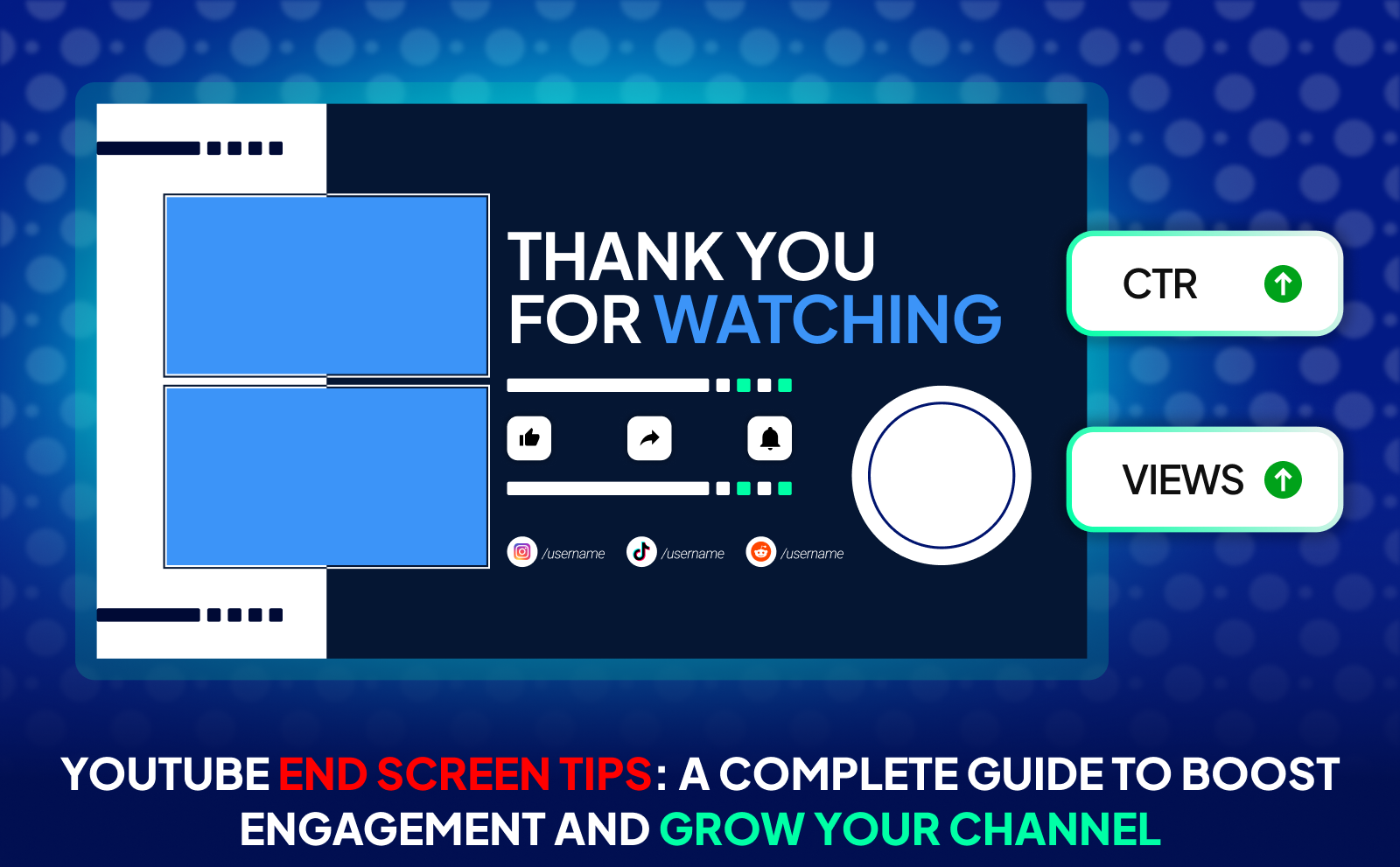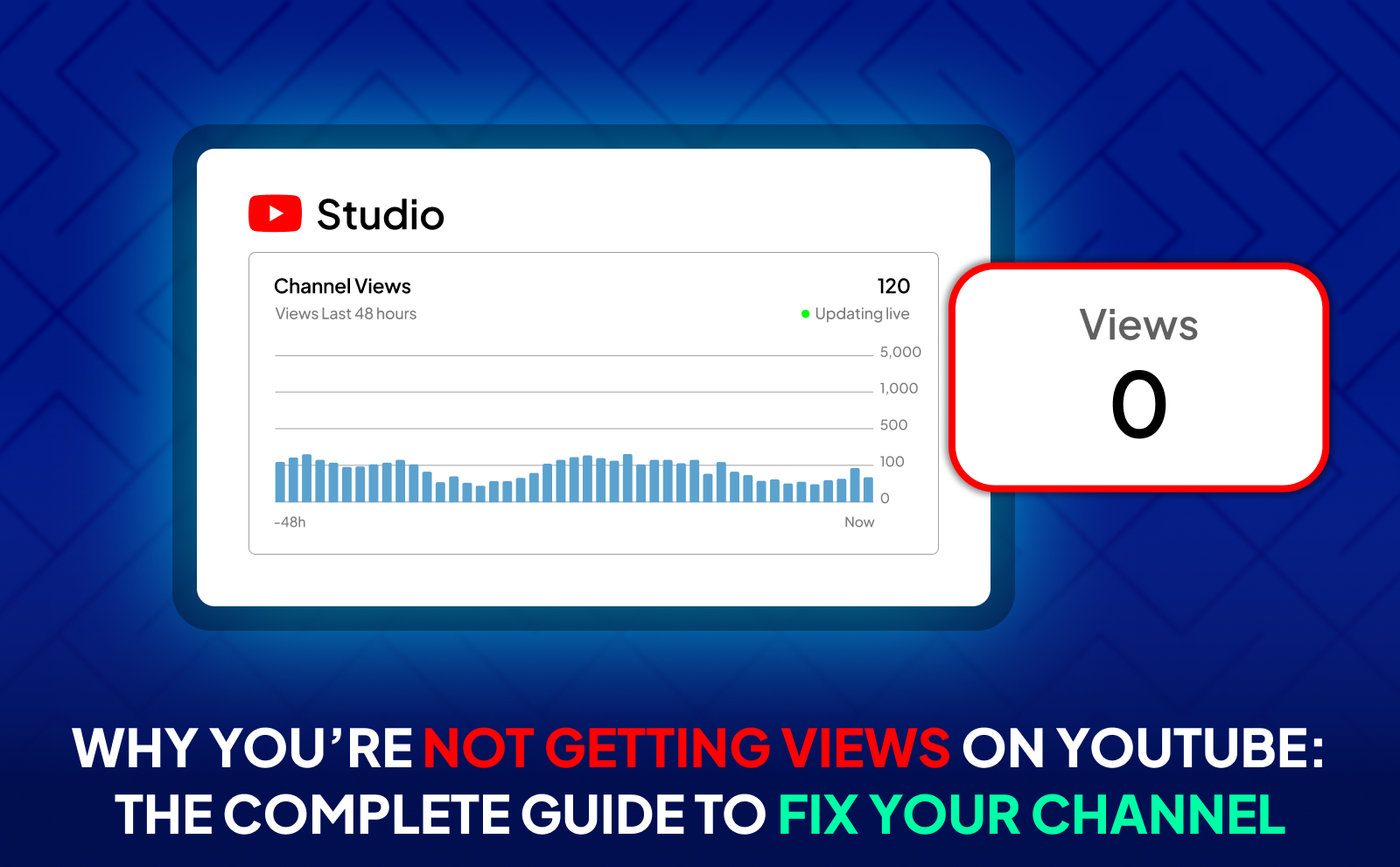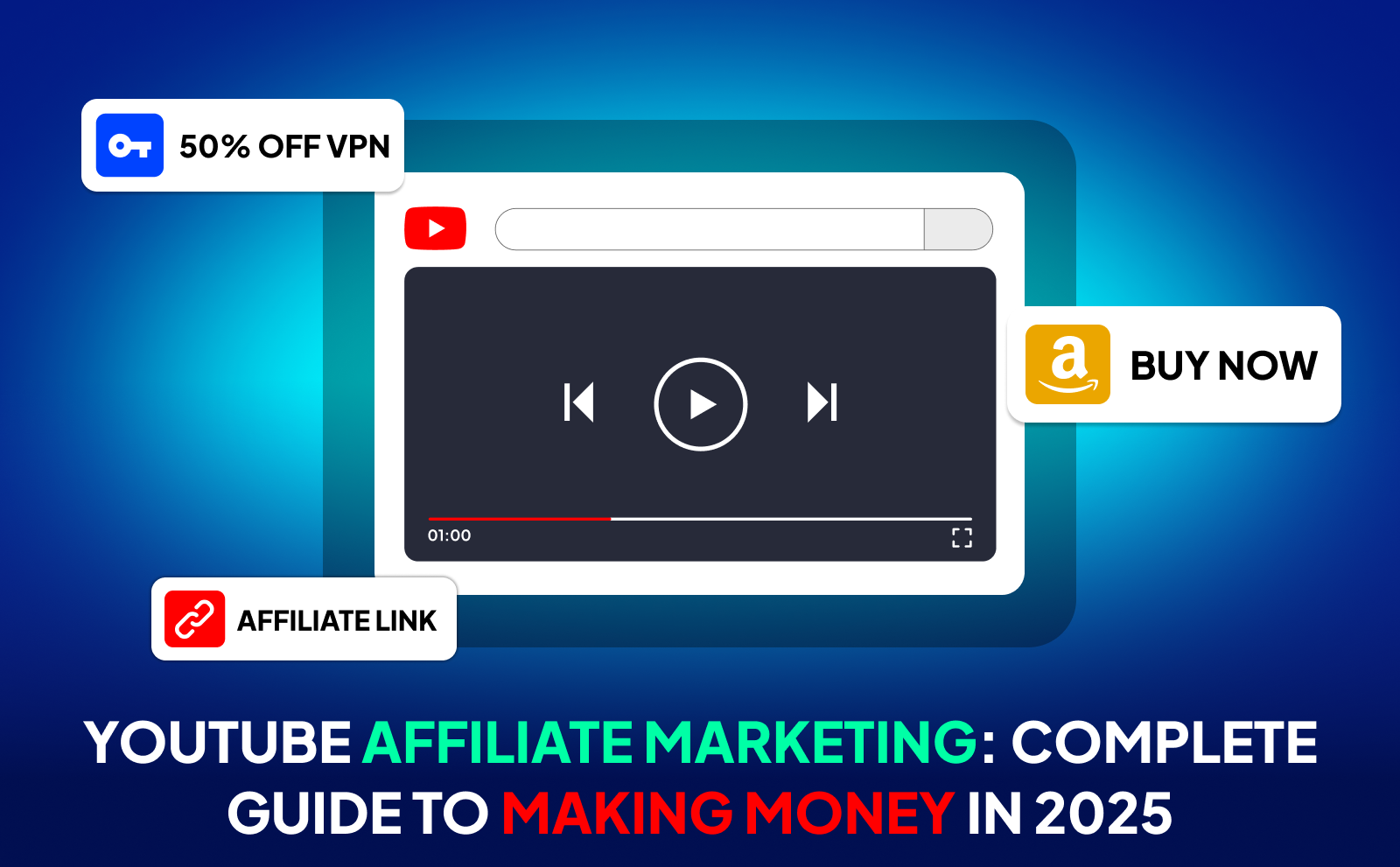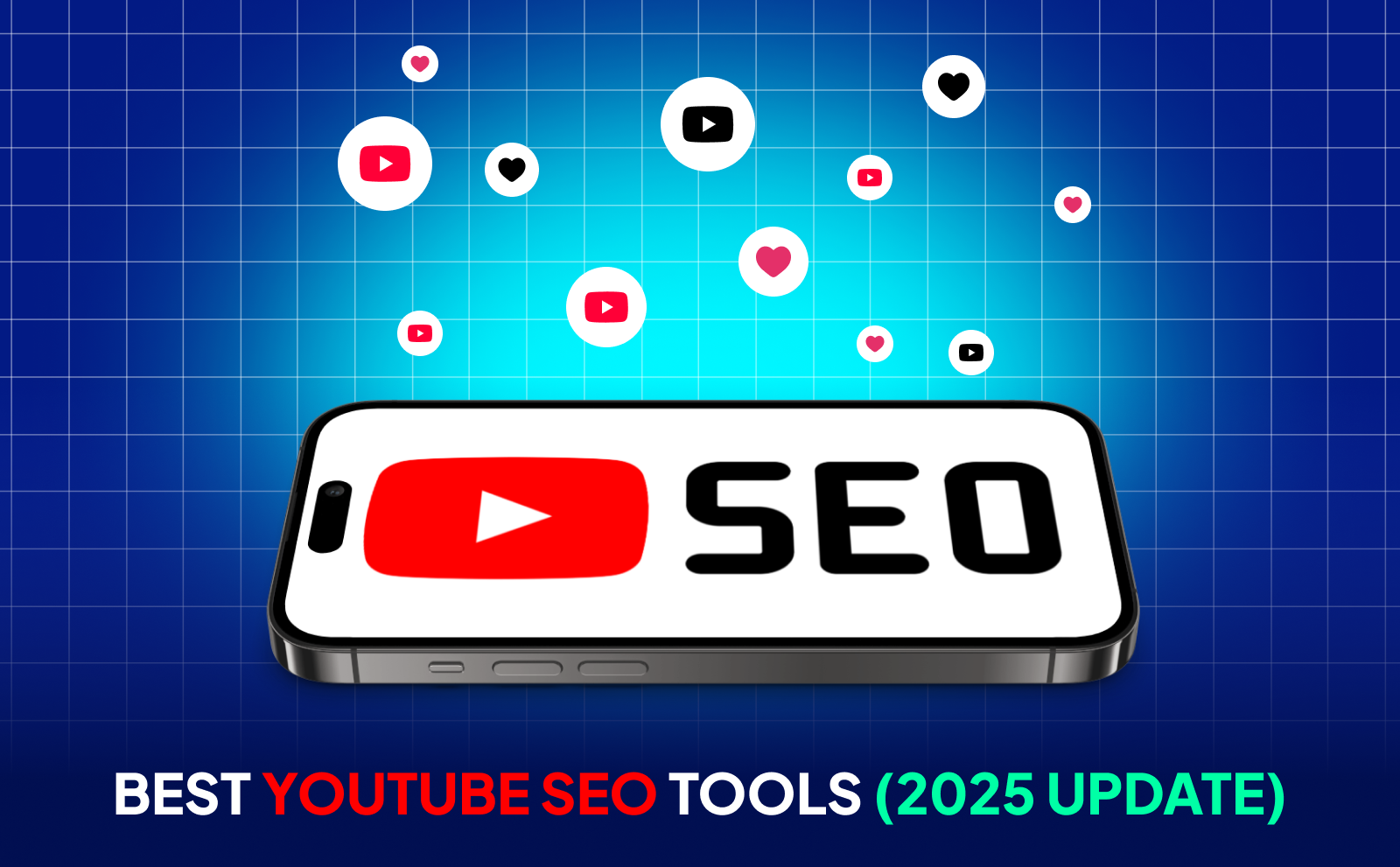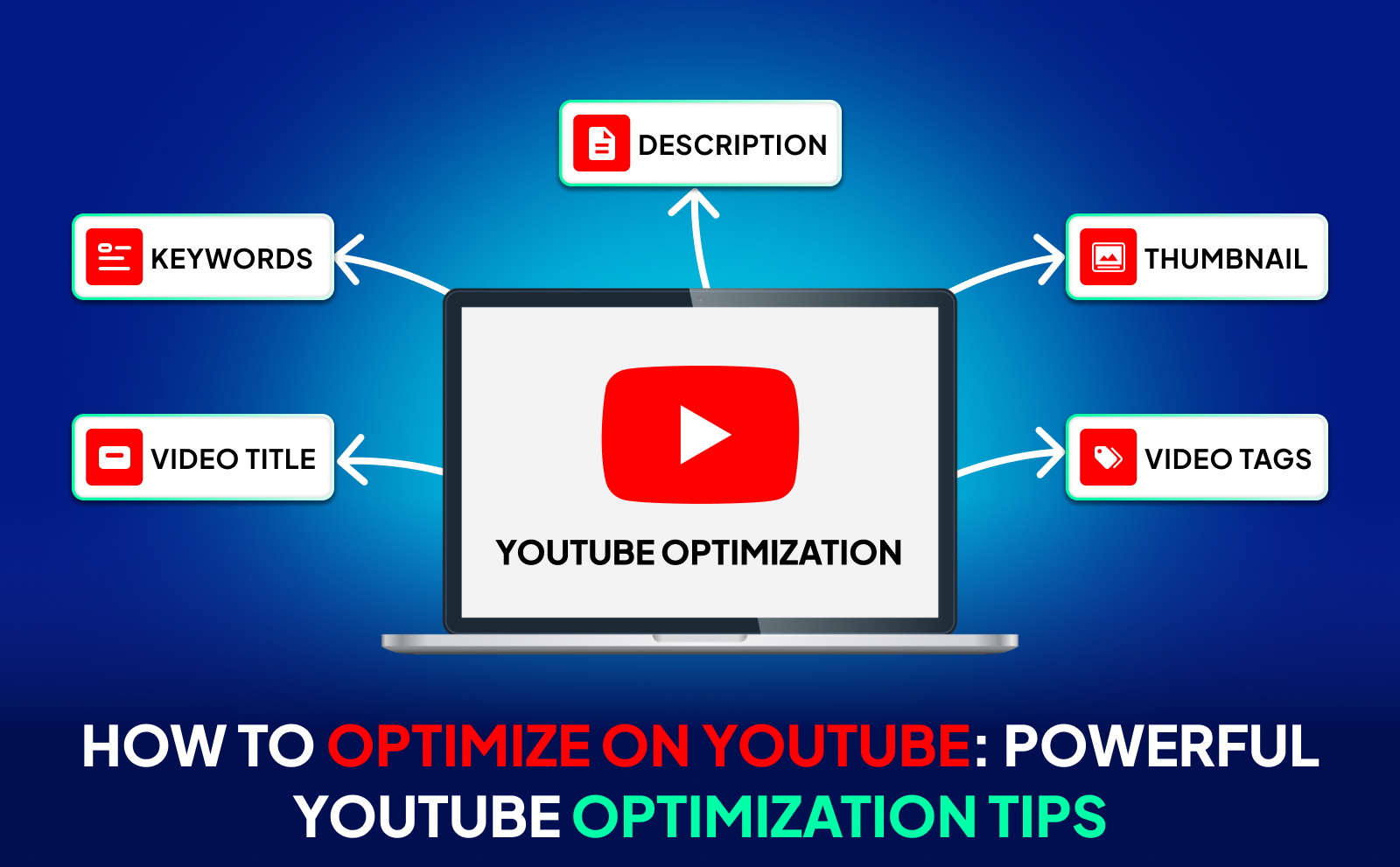
Get More YouTube Watch Hours Fast with This 2026 Strategy
Understanding YouTube Watch Hours And Monetization requirements
If you want to make money on YouTube, understanding how watch hours work is one of the most important first steps. To join the YouTube Partner Program and unlock monetization, your channel needs to reach 4,000 public watch hours in the past 12 months (or get 10 million Shorts views in the last 90 days), and have at least 1,000 subscribers.
Watch hours basically represent the total amount of time viewers spend watching your videos. This means it’s not just about how many people click on your video. it’s about how long they actually stay and watch. If your content is engaging and keeps people on the platform, YouTube sees that as a strong signal and rewards you with better reach and monetization opportunities. Think of watch hours as a trust signal between you and YouTube: the more watch time you bring, the more they’ll push your videos to new audiences.
What Are Public Watch Hours On YouTube?
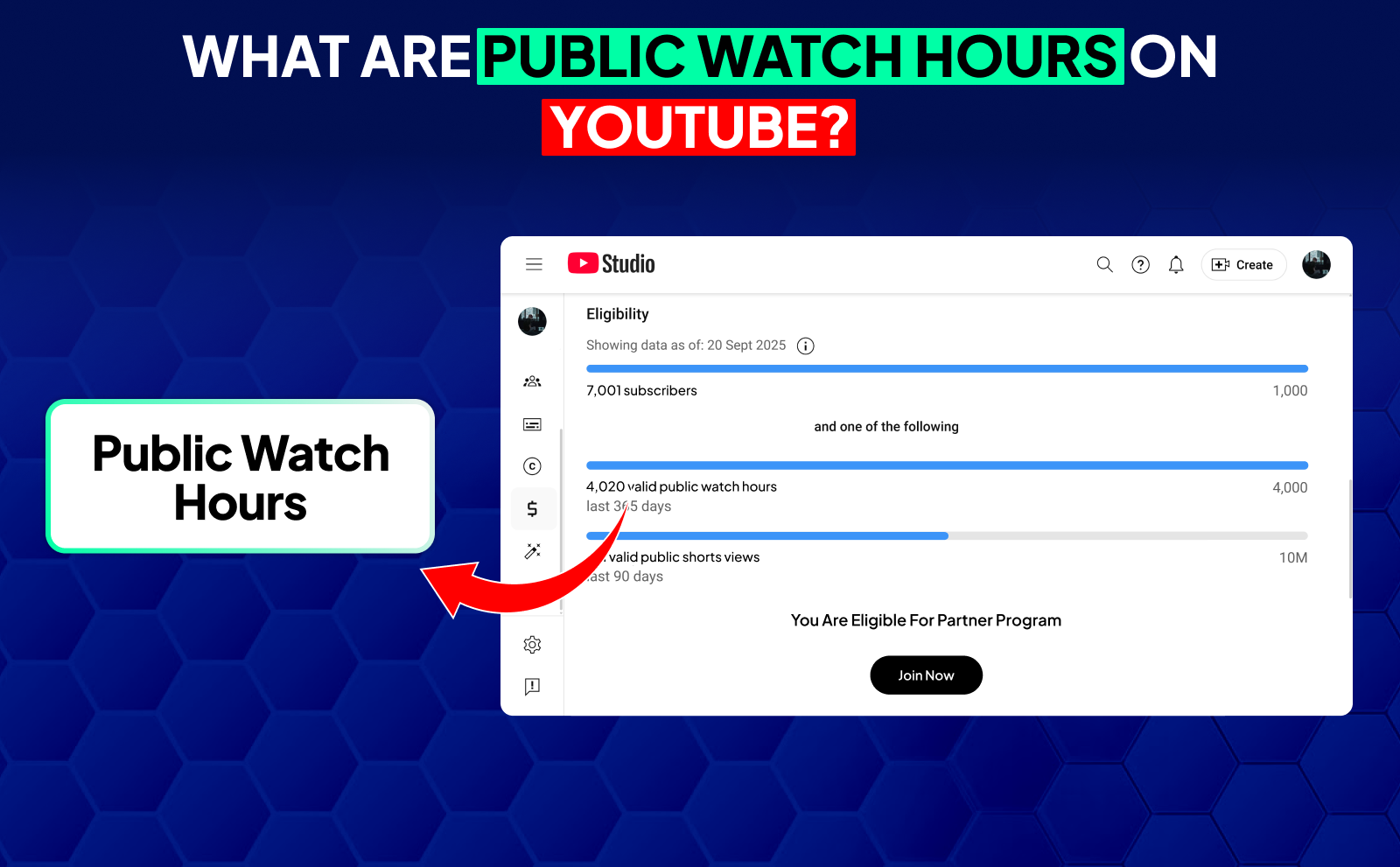
“Public watch hours” are the total number of hours people spend watching your publicly available videos. This means only watch time from videos that are set to “Public” counts toward monetization. If your videos are Private, Unlisted, or deleted later, that watch time doesn’t count toward the 4,000-hour requirement. For example, if someone watches one of your unlisted videos for 10 hours, it won’t help your channel reach the monetization goal.
It’s also worth noting that watch time from YouTube Shorts doesn’t count toward the 4,000-hour requirement. Unless you hit the Shorts alternative requirement of 10 million views in 90 days. So if your strategy relies on Shorts alone, you’d need to reach that milestone instead. But for most creators growing a channel through long-form videos, focusing on building consistent public watch hours is the fastest way to unlock ads, channel memberships, and other income streams.
The Difference Between Watch Hours And Views

Watch hours and views are not the same thing, and understanding the difference can help you build smarter strategies. Views simply count how many times your video has been clicked on and started. Even if someone watches your video for just a few seconds, it still counts as one view. But watch hours depend on how long people actually stay and watch. If 100 people watch your 10-minute video all the way through, that’s 1,000 minutes or over 16 watch hours.
This means one video with fewer views can still bring in way more watch time than another with thousands of short clicks. So instead of only chasing viral views, it’s smarter to focus on creating content that people want to finish. A smaller, more engaged audience can help you hit monetization faster than a big but distracted one. Think of it like this: views are the door, but watch time is the key to unlocking real growth on YouTube.
Why YouTube Watch Time Matters For Your Channel?
Watch time is one of the biggest ranking signals in YouTube’s algorithm. The longer people watch your content, the more the platform assumes it’s valuable. And when YouTube sees value, it rewards you by recommending your videos to more people through the homepage, suggested videos, and search results. This is why creators who focus on keeping viewers engaged usually grow faster than those who only try to get clicks.
Watch time also helps build trust with your audience. When people spend several minutes, or even hours, watching your videos, they’re more likely to subscribe, comment, and share. This kind of loyalty compounds over time and turns casual viewers into a community. And once you hit that monetization threshold, strong watch time can lead to better ad performance and higher revenue. So, instead of chasing quick numbers, aim to create content that keeps people watching until the very end. That's the real growth hack on YouTube.
YouTube Monetization Criteria: Breaking Down The 3000 Watch Hours Requirement

While YouTube’s official Partner Program still requires 4,000 public watch hours or 10 million Shorts views, some creators set smaller milestones like 3,000 hours to stay motivated and track progress. Hitting 3,000 watch hours means you’re already about 75% of the way there, which is a huge achievement. It shows you’ve built consistency, engagement, and a loyal audience who actually watches your content, not just clicks and bounces.
And more than that, when you hit 3000 watch hours and 500 subscribers, you become eligible to receive super thanks and donations from your viewers. Which is a cool feature to motivate small creators. Think of 3,000 watch hours as your “training phase.” It’s where you fine-tune your content strategy, figure out what keeps people watching, and learn how to deliver more value per video. Once you’re close to this number, small improvements in retention or video length can quickly push you over the 4,000-hour line.
How Many Watch Time Hours To Monetize YouTube?
To officially monetize your YouTube channel, you need 4,000 valid public watch hours in the last 12 months and 1,000 subscribers. This requirement helps YouTube ensure that creators joining the Partner Program are consistent and have a real, engaged audience. If you prefer Shorts, there’s an alternative: 10 million public Shorts views in 90 days.
That might sound intimidating, but it’s more doable than most beginners think. You don’t need millions of views to get 4,000 hours. just consistent content that keeps people watching. For example, if you upload one 10-minute video per week and each video gets an average of 8,000 full views, you’ll reach monetization in less than 3 months.
Valid Watch Hours vs Total Watch Hours: What Counts?
Not all watch time on your channel counts toward monetization. Valid watch hours include only the time spent watching your public videos. If you have private, unlisted, or deleted videos, the hours from those won’t be included in the total that counts toward the 4,000-hour threshold. Similarly, watch time from ads, YouTube Shorts (unless you reach 10M views), or videos played through YouTube Premium previews doesn’t count either.
Your total watch hours might look higher in analytics, but only the valid ones matter for monetization. The key is to keep your videos public, avoid deleting older uploads that still get views, and focus on longer-form content that’s publicly available. This ensures every minute viewers spend on your channel actually pushes you closer to monetization.
What Are Watch Hours On YouTube And How They’re Calculated
Watch hours are simply the total number of hours people have watched your videos. YouTube calculates them by adding up all the minutes watched across your channel and dividing that by 60. For example, if your viewers have watched your content for 240,000 minutes in the past year, that equals 4,000 watch hours.
It’s a powerful metric because it shows both reach and engagement. A video might have thousands of views but very little watch time if viewers leave early, which tells YouTube it’s not engaging. On the other hand, a smaller video that keeps people watching from start to finish sends a strong positive signal. That’s why focusing on increasing average view duration is just as important as getting more clicks.
The Math Behind 3000 YouTube Watch Hours: How Many Views Do You Need?
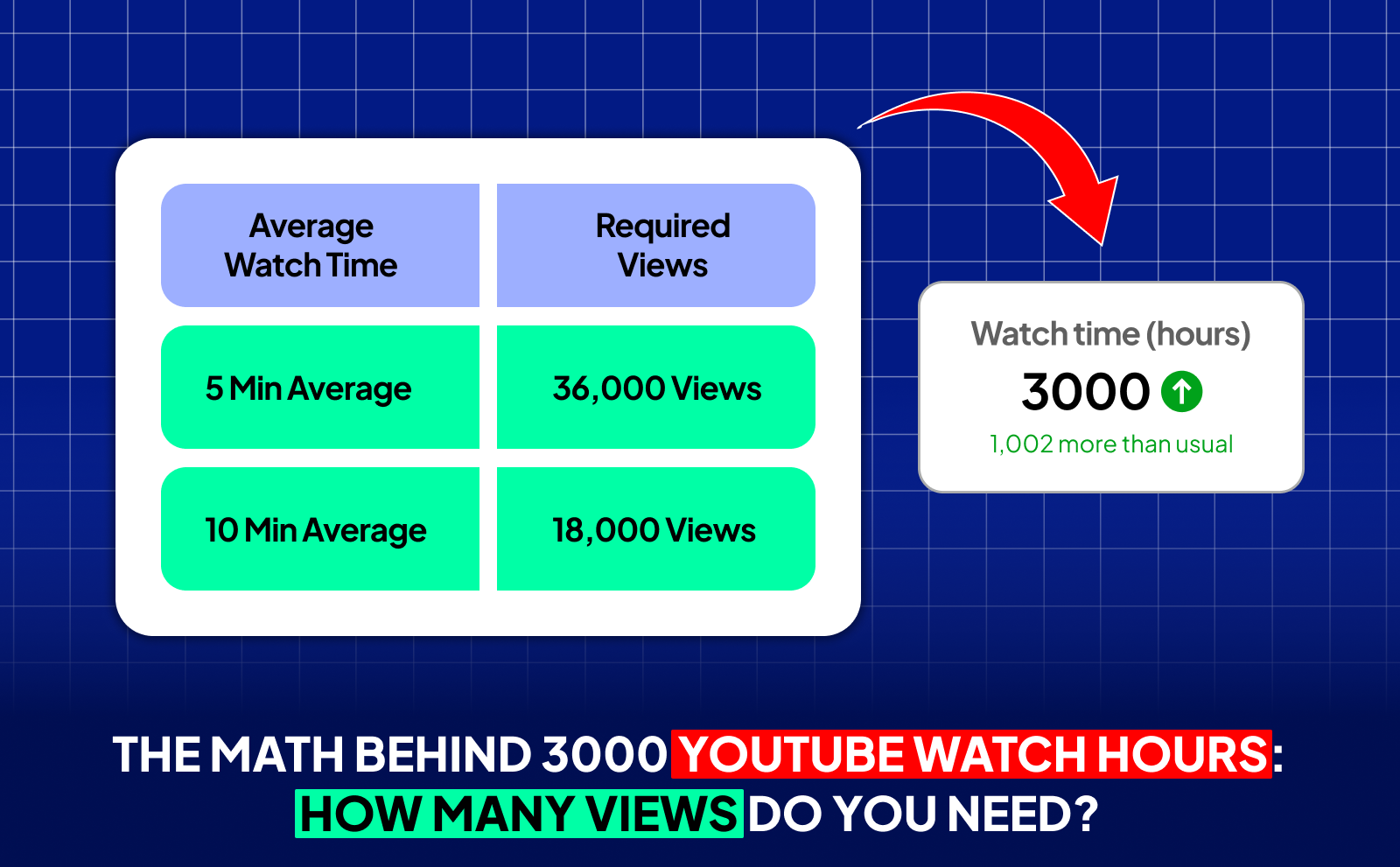
Let’s break it down with simple math. One watch hour equals 60 minutes of total view time. So, to get 3,000 watch hours, you need 180,000 total minutes of watch time. How you reach that depends on your average view duration.
For example, if your average viewer watches your videos for 5 minutes, you’d need 36,000 total views (because 36,000 x 5 = 180,000 minutes). But if your videos average 10 minutes of watch time, you’d only need 18,000 views to hit 3,000 hours. The longer and more engaging your videos are, the fewer total views you need. That's why focusing on retention is more efficient than chasing viral clicks.
Converting YouTube Video Watch Hours Into Actionable Goals
To make your watch time goal easier to reach, break it into smaller steps. For instance, 3,000 watch hours in a year means 250 hours per month or roughly 8.3 hours per day. That’s a manageable number when you plan consistent uploads and encourage viewers to watch multiple videos in one session.
You can track your progress under the “Monetization” tab, which shows how close you are to 4,000 hours. Set mini-goals like hitting 500, 1,000, and 2,000 watch hours, and adjust your strategy along the way. Once you make this a measurable routine instead of a vague dream, the process feels more achievable and motivating.
Proven strategies To Get 3000 Watch Hours Fast
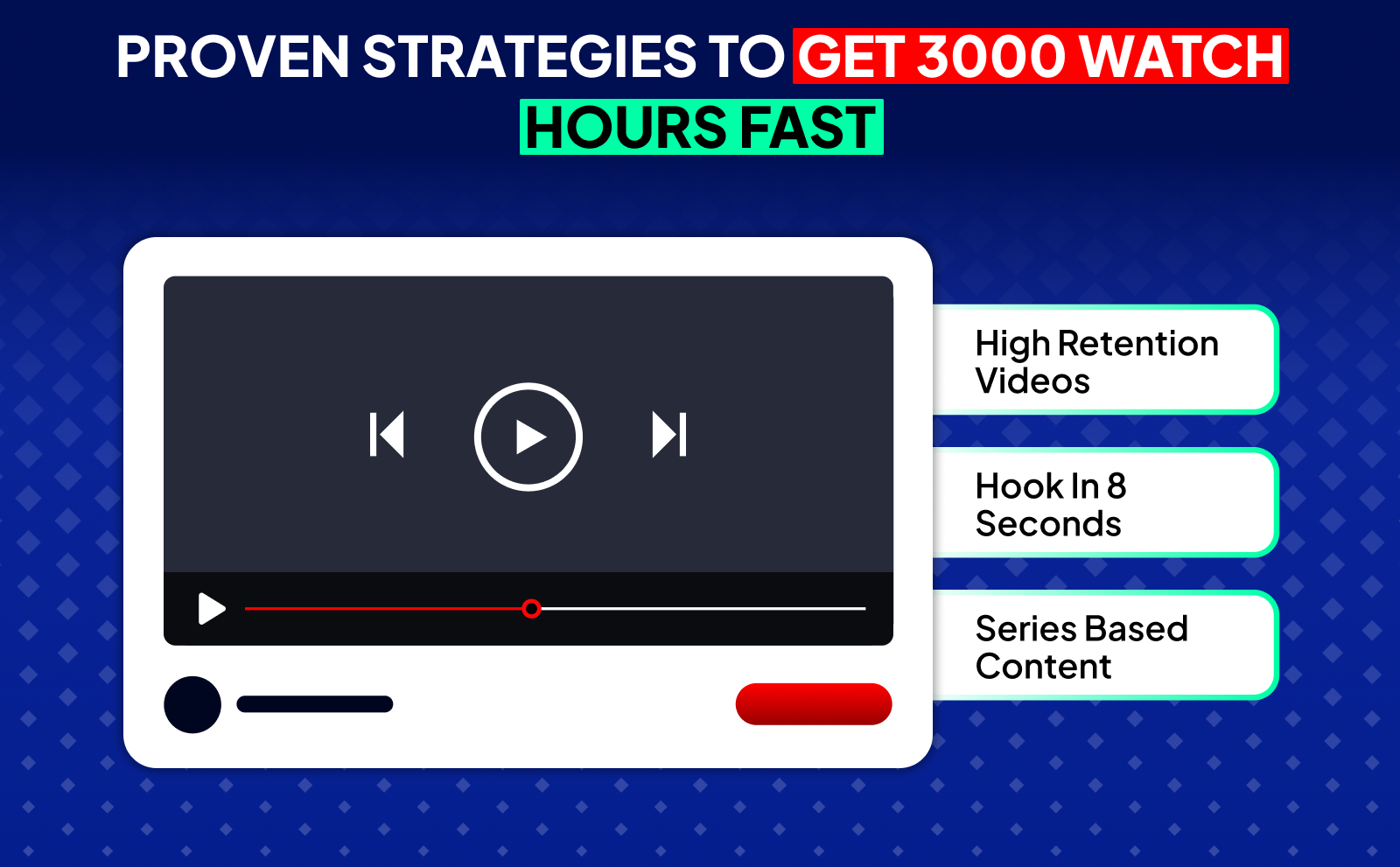
Create Longer, High Retention Videos (8 Minutes +)
Longer videos give you more potential watch time per viewer, especially if they’re engaging enough to keep people watching. Aim for at least 8–12 minutes so you can naturally build storytelling, teach in depth, or entertain without rushing. But remember, long doesn’t mean boring. focus on delivering value and maintaining attention every minute.
Hook Viewers In The First 10 Seconds
The first 10 seconds decide whether someone keeps watching or clicks away. Start strong with curiosity, bold statements, or quick previews of what’s coming. Avoid long intros or filler. Your hook should instantly make the viewer think, “I need to see where this goes.” High retention starts at the very beginning.
Use Series-based content and challenges to keep viewers coming back
Turn your videos into a connected series instead of random uploads. For example, make a “Week 1 to Week 4” transformation series or a multi-part tutorial. This encourages binge-watching and naturally increases total watch hours because people want to see what happens next.
How To Increase Public Watch Hours On YouTube Through Optimization?

Leverage YouTube Premiers And Live Streams
Premieres and live streams give your content a sense of urgency and community. People show up at the same time, watch together, and often stay longer than they would with a regular upload. This is because live content feels more personal and interactive. The chat feature during premieres also encourages engagement, which indirectly boosts retention.
The best part is that after the live or premiere ends, the replay still counts toward your public watch hours. That means one well-planned live stream can bring in hours of watch time from both real-time viewers and people who watch later. If you want to grow faster, scheduling a weekly or bi-weekly live event is a powerful shortcut.
Build Playlists That Encourage Watching
Playlists are a simple but underrated watch time strategy. When someone finishes one video, the next one in the playlist starts automatically, which keeps viewers on your channel longer without you lifting a finger. If your content is connected around a clear theme, a playlist can turn a single view into 3, 5, or even 10 views in one sitting.
To make this work, organize your videos in a logical order that flows naturally. For example, if you teach something, start from beginner to advanced. If it’s entertainment, keep a storyline or vibe consistent. A well-made playlist doesn’t just increase watch hours, but it also improves your audience retention and session duration, two key signals for YouTube’s algorithm.
Use End Screens And Cards To Drive More Watch Time
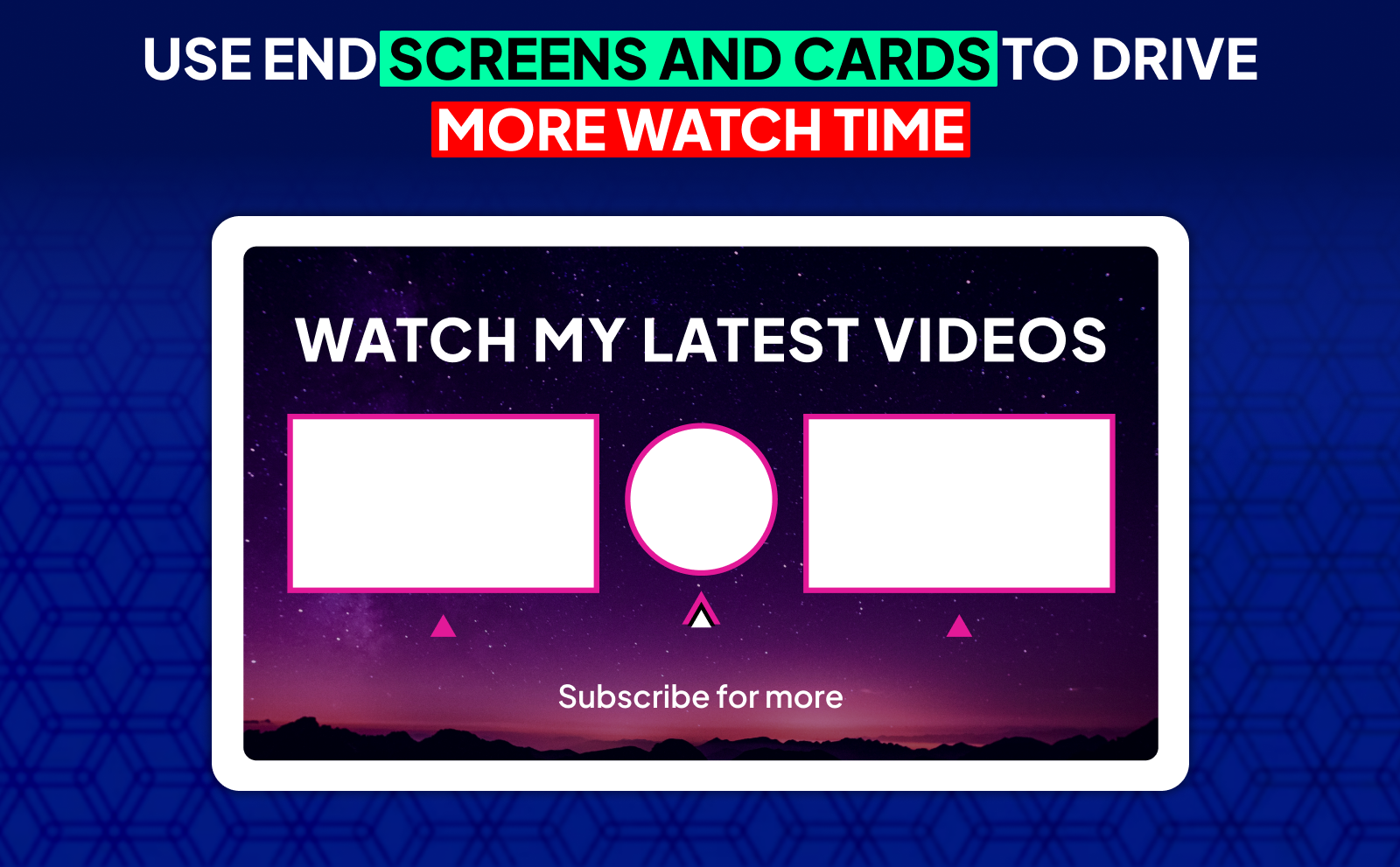
End screens and cards are like gentle nudges that guide your viewers toward your next piece of content instead of letting them go off the platform. If someone finishes your video, that’s the best time to suggest another because they’ve already proven they’re interested. A simple end screen with “Watch Next” or “Part 2” can turn one watch into multiple.
It’s smart to link to your most relevant or high-performing videos here. For example, if someone just watched a tutorial, link them to the next step in the process. This makes their viewing experience smooth and intentional, boosting your total watch time with minimal effort.
Maximizing Watch Time From Subscribers On YouTube

Create Content Your Subscribers Actually Want To Watch
Your subscribers are your most powerful watch time source. Unlike random viewers, they already like your content and are more likely to watch longer. But this only works if you consistently give them what they actually care about. Pay attention to your most successful videos. Those topics are usually what your subscribers want more of.
Instead of guessing, use your analytics, polls, or community tab to find out directly what they want to see next. When subscribers watch your videos as soon as they drop, your early watch time spikes, which helps the video perform better in recommendations. A strong subscriber base can carry your channel far beyond what views alone can do.
Engage Your Community Tab For Better Retention
The community tab is a goldmine for keeping your subscribers warm between uploads. Posting polls, sneak peeks, or behind-the-scenes updates builds a stronger connection with your audience. When people feel included, they’re more likely to watch your videos fully and consistently.
You can also use the tab to tease upcoming videos and build anticipation. For example, posting about a reveal or sharing a thumbnail early can spark curiosity. That anticipation often leads to more people clicking your video the moment it drops, giving your watch time an early boost.
Post Videos When Your Audience Is Most Active
The time you upload can directly affect your initial watch time. If you post when your audience is asleep or busy, your video might miss its chance to catch early momentum. Posting at the right time, when most of your subscribers are online, can give your video a strong push right from the start.
You can find your best posting times in the “Audience” tab of your YouTube analytics. Look for the purple bars that show when your viewers are active. Consistently uploading at those peak times can lead to more immediate views, better retention, and stronger overall performance.
Advanced Tactics To Get More Public Watch Hours On YouTube
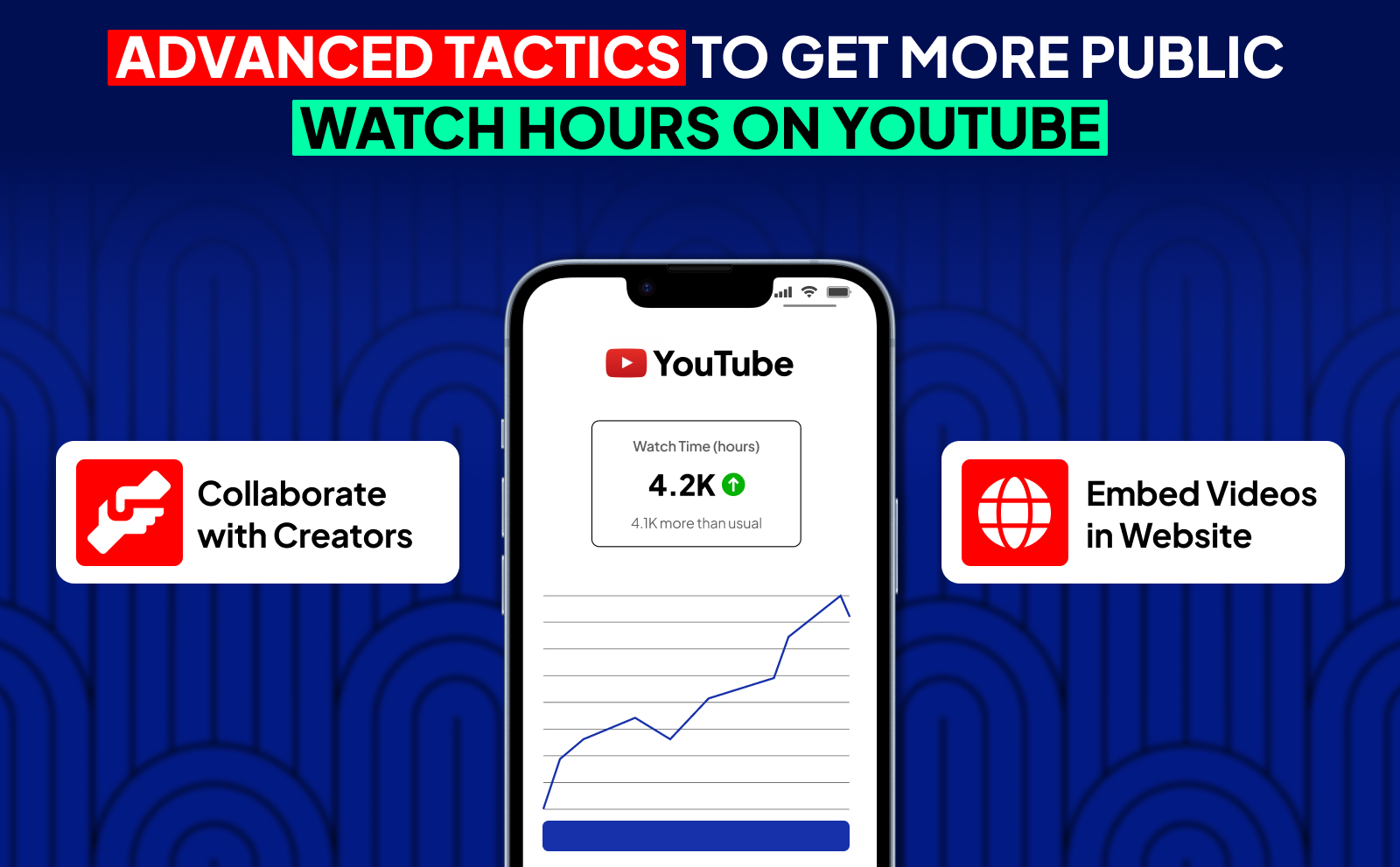
Embed YouTube Videos On Your Website
If you have a blog, personal site, or landing page, embedding your videos can bring in extra watch time without relying on YouTube search alone. When visitors watch your embedded videos directly on your site, those minutes still count toward your total public watch hours. It’s a clever way to tap into traffic you already own.
This works especially well for tutorial-based or informational content. You can write an article and embed your related video at the top or middle. Visitors who prefer watching over reading will stay on the video, giving you more watch time from an audience that might not have found you on YouTube.
Collaborate With Other YouTubers In Your Niche
Collabs are one of the fastest ways to get in front of new audiences that already trust someone else. When you collaborate with another creator, you borrow their audience’s attention and bring fresh eyes to your channel. If they like what they see, they’ll watch your videos longer and maybe even binge multiple uploads.
The best collaborations are genuine and bring value to both audiences. Instead of random collabs, pick creators with similar content or energy. It’s not about having a huge partner. Even a smaller channel with a loyal community can give your watch hours a healthy boost.
Repurpose Old Content Into New Formats

Your older videos might still have a lot of potential. Instead of letting them collect dust, repurpose them into new, engaging formats. For example, turn a long livestream into highlight clips, update a tutorial with new info, or create compilations of your best moments. This lets you earn new watch time from content you’ve already made.
Repurposing also breathes new life into your channel without the pressure of creating something from scratch. If those old videos performed well once, chances are they’ll work again when refreshed and re-uploaded strategically.
Promote Your Videos On Social Media Platforms
Don’t rely only on YouTube’s algorithm to bring you traffic. Sharing your videos on platforms like Instagram, Reddit, Facebook, and X can get new viewers to watch your content. But instead of just dropping links, make your post intriguing. A short caption or teaser can make people curious enough to click and stay.
The extra traffic from outside platforms can also signal to YouTube that your content is worth promoting internally. If your video performs well with outside viewers, YouTube might push it more through recommendations, leading to even more watch time.
Use YouTube Analytics To Improve Audience Retention
Your analytics are your best teacher. The Audience Retention Graph shows exactly where viewers are dropping off. Maybe they leave too early because your intro is too long, or maybe they lose interest halfway. By spotting these patterns, you can fix weak spots and make future videos hold attention better.
Improving retention even by 10–20% can have a huge impact on your total watch time. Imagine thousands of viewers staying just one or two minutes longer on each video, it all adds up fast. This is why smart creators study their data closely and keep improving with every upload.
Common Mistakes That Prevent You From Reaching 3000 Watch Hours

Making Videos Too Short or Too Long
Short videos can struggle to generate enough watch time, especially if they’re under three minutes. On the other hand, overly long videos that aren’t structured well can make viewers leave early, hurting retention. The goal is to find a sweet spot where your video delivers maximum value without dragging on.
Think of your video like a well-edited story. Every second should serve a purpose. If it’s too short, you miss out on valuable minutes. If it’s too long and slow, you risk losing viewers. Balance is everything.
Ignoring Audience Retention Metrics

Some creators focus too much on views and completely ignore retention. But retention is what determines how long people actually stay, and that’s what grows your watch hours. If you’re not looking at your retention graph regularly, you’re missing clear opportunities to improve.
A small change, like cutting down a boring intro or adding a cliffhanger, can make people stay longer. Retention is like the heartbeat of your channel. Keep it healthy, and everything else grows faster.
Inconsistent Upload Schedule
YouTube rewards consistency because it builds trust with your audience. If you upload randomly, viewers lose interest and forget to check your channel. But when you post on a schedule, even just once a week, people know when to show up.
A steady upload rhythm also helps your videos build momentum faster. More consistent uploads lead to better watch time, which leads to better recommendations, and the cycle keeps building.
Relying Only On YouTube Shorts For Watch Time

Shorts are great for visibility and reaching new audiences, but they don’t count toward your 4,000-hour requirement. If you rely only on Shorts, you’ll build followers but not monetization progress. That’s why smart creators use Shorts to attract viewers and long-form content to convert that attention into watch time.
A good strategy is to post Shorts that lead people into your main videos. For example, tease a result or a highlight in a Short, then tell viewers to watch the full story on your channel. This way, Shorts become a traffic funnel instead of a dead end.
Conclusion
Getting to 3000 watch hours isn’t just about uploading random videos and hoping for the best. It’s about building real momentum and making content people actually finish watching, keeping them coming back, and slowly stacking hours that turn into opportunities. If you stay consistent, learn from what’s working, and stop overthinking perfection, you’ll hit 3000 faster than you ever think. This isn’t some overnight thing, but it’s 100% doable if you play it smart. Every hour watched is proof that your channel is growing. Keep pushing.
Frequently Asked Questions
How Long Does It Take To Get 3000 Watch Hours On YouTube?
It depends on your content and consistency — some creators hit it in a few months, others take longer. The key is steady growth, not speed.
Do YouTube Shorts Count Toward 3000 Watch Hours?
Nope, Shorts don’t count toward the 3000-hour requirement. Only long-form videos and live streams do.
Can I Buy YouTube Watch hours To Read Monetization Faster?
You can, but it’s risky and against the rules. It can actually hurt your channel more than help it.
What Is The Difference Between 3000 And 4000 Watch Hours Requirements?
3000 watch hours is for fan funding features. 4000 watch hours is for full monetization with ads.
How Do I Check My Current YouTube Watch Hours?
Just head to YouTube Studio, Analytics, then Watch time. You’ll see your total hours right there.
Does Watch Time From Subscribers Count More Than Regular Viewers?
Not really. an hour is an hour. But loyal subscribers are more likely to watch longer, which boosts your total.
What Are Valid Watch Hours On YouTube?
Valid watch hours come from real people watching your public videos. Bot traffic, Shorts, or deleted videos don’t count.
Can Unlisted Or Private Videos Contribute To Watch Hours?
Nope, only public videos count toward your 3000 watch hours.

